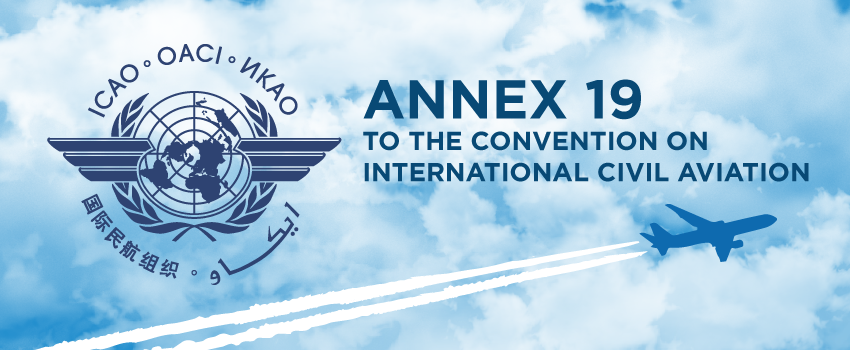
To align with ICAO Annex 19 many aviation industry organisations will have implemented a Safety Management System (SMS) of some description by now. This requirement was first muted in the initial edition of ICAO, Annex 19 which became applicable in November 2013. This first issue set the groundwork for each participating country to establish a State Safety Program (SSP) which, in turn, would require all service providers to implement a SMS. The implications of the revised Annex 19 are, however, more widespread. Read the rest of the article to learn more about three particular implications.
The second edition of Annex 19 was issued in July 2016 and is set to become applicable in November 2019. As part of this edition, the requirement for SMS implementation is extended to include organisations involved with the type design and/or manufacture of aircraft engines and propellers.
As with the first issue of Annex 19, ICAO have updated their Safety Manual (ICAO Document 9859) to Edition 4. This important document provides an expansive explanation of the requirements contained in Annex 19. Of note are the emerging requirements for organisations to implement safety data collection and processing systems alongside data analysis tools and suitable presentation applications such as safety dashboards.

1. Data Driven Decision Making (D3M)
Organisations will also be expected to determine, and monitor, a series of Safety Performance Indicators (SPIs) with their accompanying targets. These SPIs will be specific to each organisation but should be aligned to their safety policy and objectives. Examination of SPIs and their targets coupled with enhanced data analysis and presentation techniques will enable Data Driven Decision Making (D3M).
Many aviation occurrences have resulted, at least in part, from poor management decisions, which can result in wasted money, labour and resources. In the short term, the goal of safety decision-makers is to minimise poor outcomes and achieve effective results, and in the long term, contribute to the achievement of the organisation’s safety objectives.
A structured approach such as D3M will drive management to making decisions based on what the safety data is indicating. This requires trust in the safety performance management framework, if there is confidence in the Safety Data Collection and Processing System there will be trust in any decisions derived from them.
ICAO is keen that organisations are able to make management decisions based on reliable and comprehensive safety data using D3M processes.
2. Regulatory Changes
Regulators themselves will also be required to implement changes with respect to the new version of Annex 19. Specifically, they will be required to determine which sections of their jurisdiction require more detailed supervision as part of the Performance Based Oversight (PBO) requirements.
In effect, ICAO will require regulators to apportion their limited resource to those areas that require the most attention. The primary means by which an organisation can demonstrate to their regulators that they are meeting their safety targets and maintaining an Acceptable Level of Safety Performance is by suitable presentation of their SPIs and evidenced D3M. Can your current systems achieve this?
3. Audit Programme
Finally, it is worth noting that ICAO have stated that they intend to commence an audit program of all NAAs to determine their compliance with Revision 1 of Annex 19. This audit program was due to start in 2018 but is likely to be delayed until next November 2019 to coincide with the activation of Annex 19, revision 1.
If your regulator has not been overly strict with the enforcement of ICAO SARPs with respect to SMS implementation; you can expect a sudden change of gear next year!
Download our free insight ‘ The Essential Guide to Aviation Safety Management Systems’ now to learn more.


